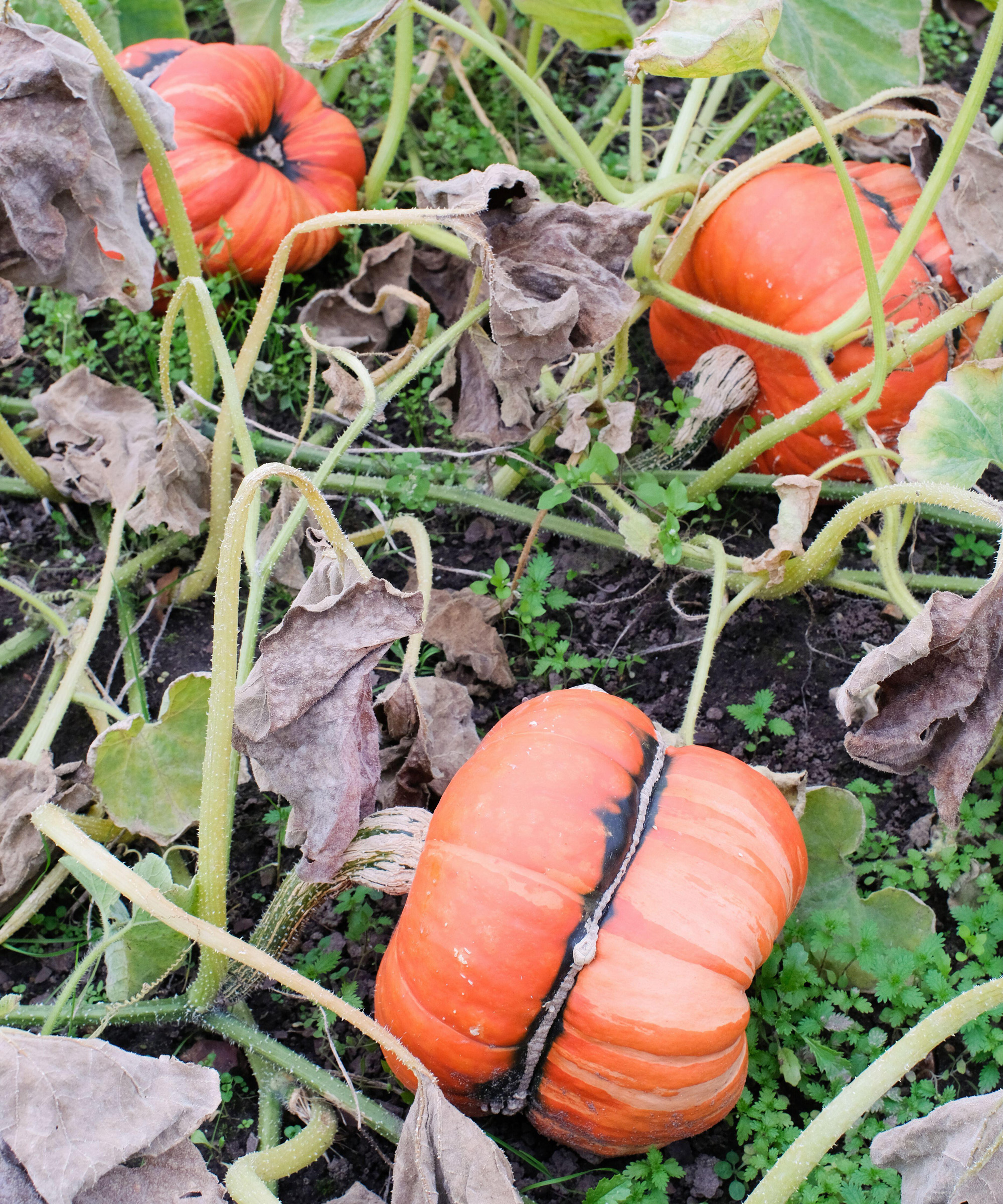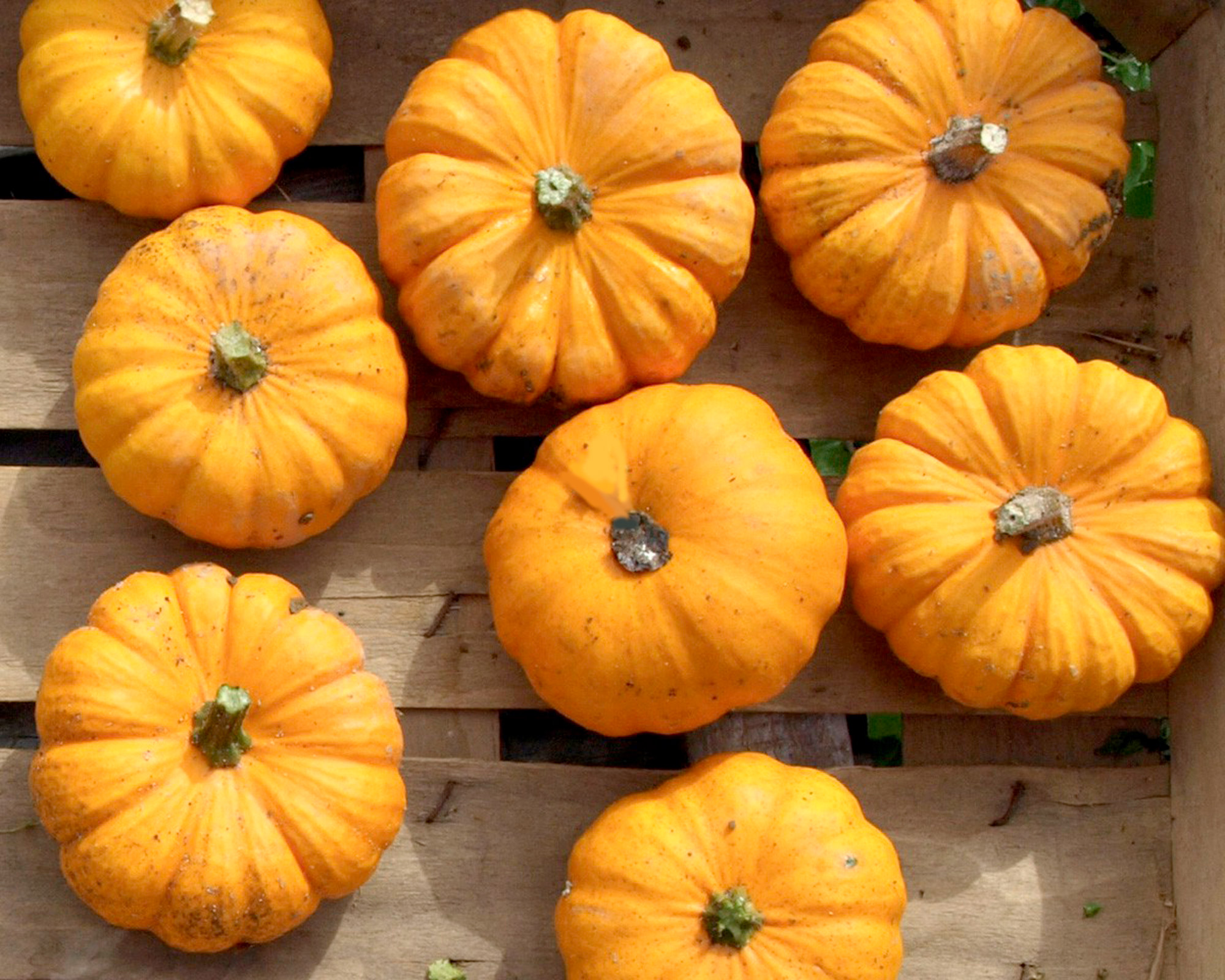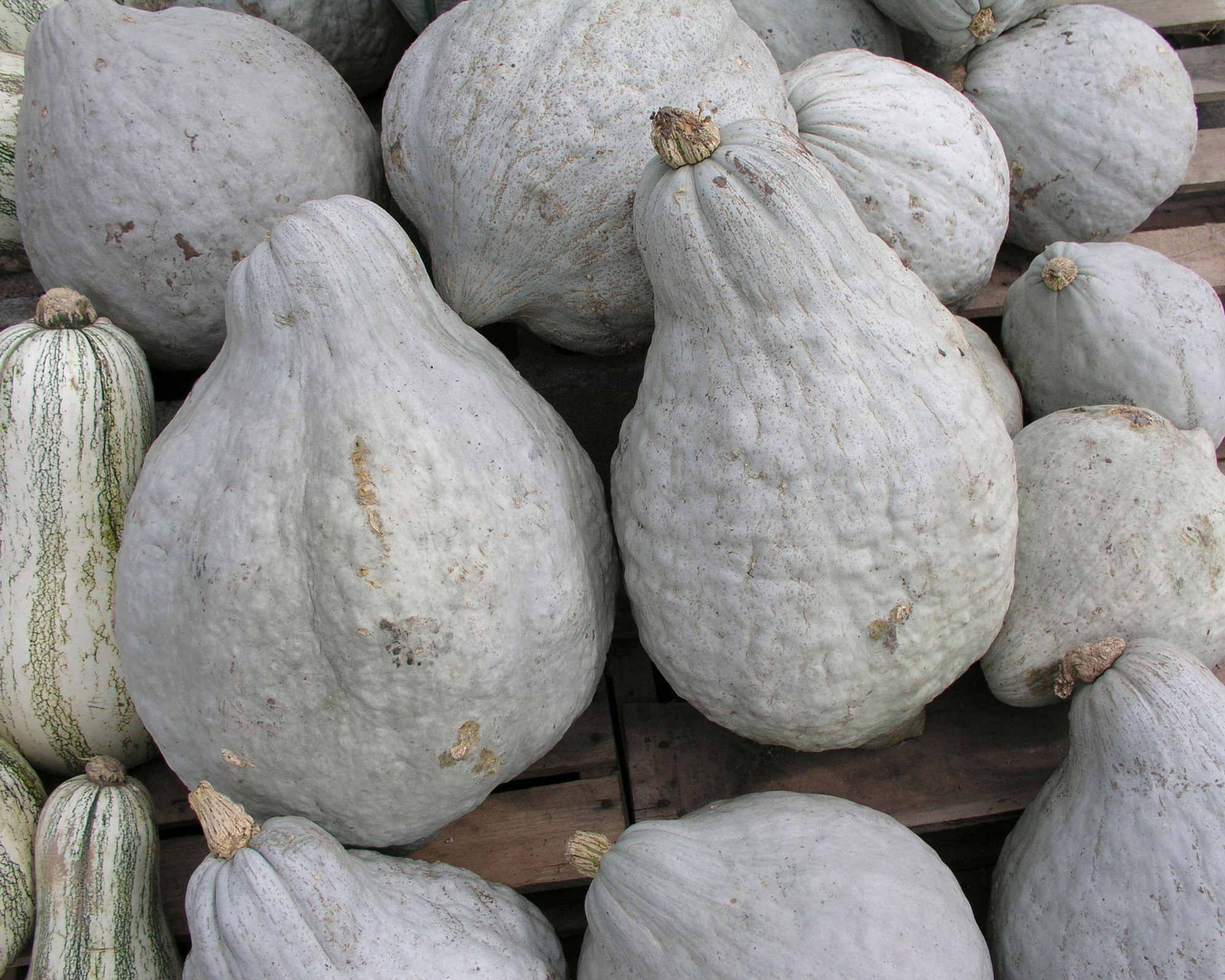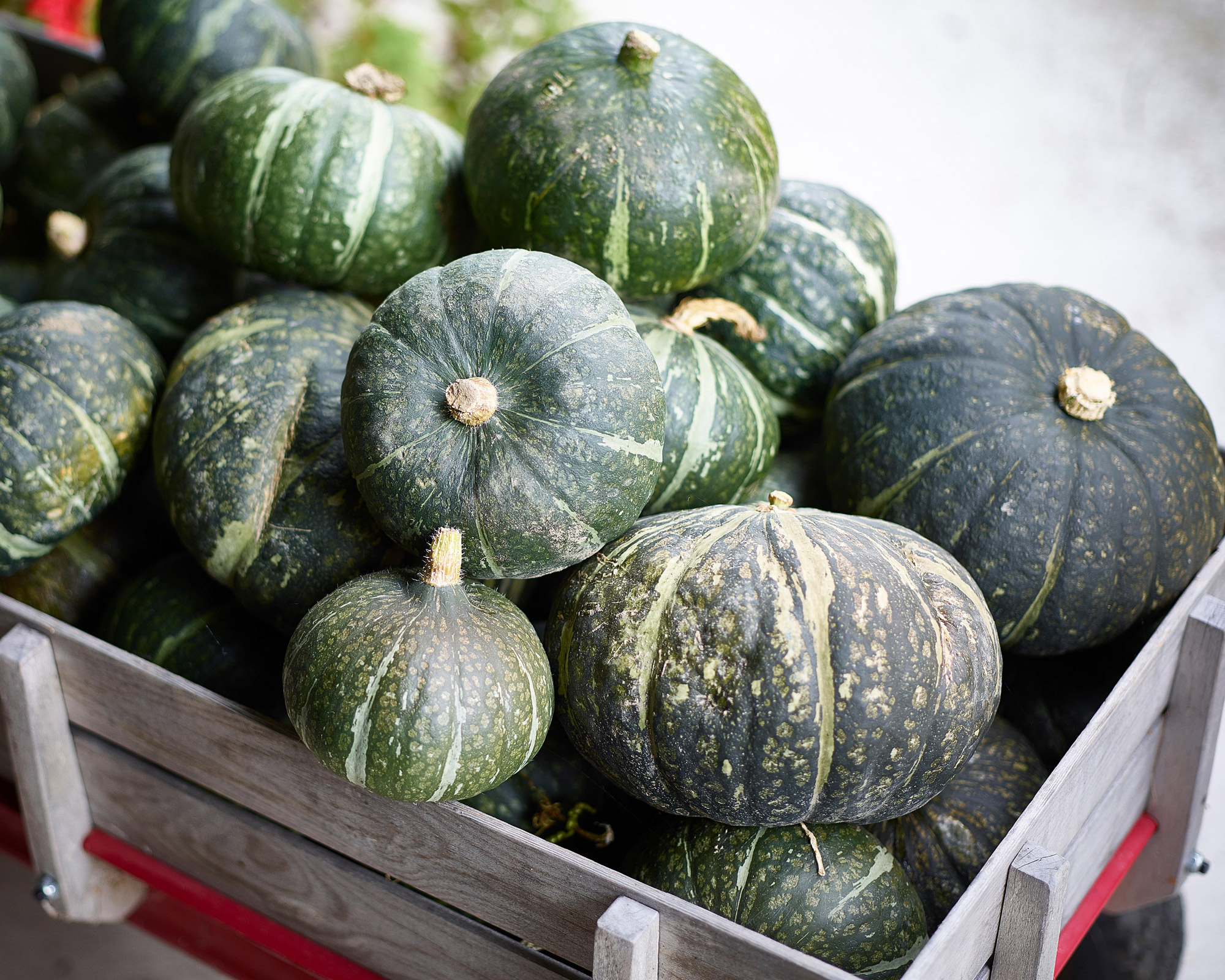Types of squash: 15 tasty varieties to grow at home
Discover the best types of squash to grow in your plot, including pumpkins, butternuts and assorted cucurbits


The many different types of squash come in all shapes and sizes, from bulbous behemoths and elongated gourds to nobbly baseballs and frilly UFO discs. Graced in neon orange tones, hues of lime, custard and blue-grey, and jolly carnival stripes, there are plenty of breeds to explore. If your squash-growing ambitions have never extended beyond carving classic orange pumpkins, you might be surprised at just how many types of squash can be grown easily in your garden.
Squash (cucurbita) have been popular homegrown veggies for centuries. There is evidence that the outer skins of winter varieties have been used in the creation of ancient bowls and pots. Squash is one of the core crops used in the ‘Three Sisters’ intercropping planting system (with sweetcorn and beans) favored by North American tribes. They are widely celebrated for being reliable, prolific and packed with nutrients.
Knowing how to grow butternut squash is one of the key ways to boost your vitamin A intake, and many breeds are loaded with calcium, potassium and iron. And as we show here, squash are dizzyingly diverse. These memorably nutty garden dwellers fill a plot with an assortment of textures and tones from smoky blue hubbards to giant pink banana breeds.
While fall is traditionally the time to harvest many kinds of winter squash, this is also the perfect time to plan ahead for next year’s bounty. Pick the right cucurbita combinations, and you can be enjoying these quirky croppers from late summer until mid winter. Here are our top picks for your veg patch.

Squash such as Delicata, Turk’s Turban and Sweet Dumpling are brilliantly diverse in tone and texture
These 15 types of squash are great for cooking, carving and storing
From butternuts, acorns, hubbards, pattypans and dumplings to massive fairytale pumpkins, you’ll find that these squash are some of the easiest vegetables to grow and great fun to experiment with on the plot.
The selection includes types for summer and winter harvests, with some capable of being stored for six months or even longer. Winter squash take longer to develop those distinctive and often showstopping tough outer skins (100 days), while summer squash mature faster (50 days), are often smaller and have thin outer skins.
Whether you’re growing for pies and soups or for carving with the kids, there’s a squash type here for every need. Which one will you try first?
1. ‘Crown Prince’

‘Crown Prince’
- Type: winter squash, pumpkin
- Height: 60cm (24in)
- Spread: 1.8m (6ft)
- Best for: roasting and storing
Cucurbita pepo ‘Crown Prince’ stands out in any garden patch, with its pretty blue skin and deep orange innards. For anyone looking to find out how to grow pumpkins with the wow factor, this is a beautiful trailing option (grow up a frame for the best results).
Winner of an RHS Award of Garden Merit (AGM), it’s one of the most exquisite squash varieties for roasting. It is also ideal for storage and keeps for a year after harvesting.
2. ‘Hunter’ Butternut

Butternut ‘Hunter’
- Type: winter squash, butternut
- Height: 45cm (18in)
- Spread: 2m (6.5ft)
- Best for: long storage
If you’re after a butternut, ‘Hunter’ is one of the most high-yielding hybrid squash varieties you can try. It’s an excellent option for a beginner and a worthy winner of an AGM award.
Peel back its creamy porcelain jacket and the sumptuous orange flesh delights with its mild sweetness. Indeed, for those who like to grow sweet potatoes, you’ll find the taste of this squash remarkably evocative with some roasting or baking. This winter squash can be stored for around three to four months.
3. Uchiki Kuri (Red Kuri)

Uchiki Kuri (Red Kuri)
- Type: winter squash, onion
- Height: 60cm (24in)
- Spread: 1.2m (4ft)
- Best for: climbing
With its vivid, nearly neon orange jackets, the Uchiki Kuri is a beautiful ornamental onion squash that is capable of prolific harvests. You can train this trailing beauty over a trellis or climbing plant support or other sturdy frame for vertical displays, and it is a fine choice for smaller gardens.
While its outer skins are bright and chirpy, the taste is gentle and nutty and lends itself well to a host of soups and roasts.
4. ‘Fungo’

Turk’s Turban ‘Fungo’
- Type: winter squash, turban
- Height: 70cm (28in)
- Spread: 2m (6.5ft)
- Best for: potagers
With an unusual bulging ‘hat’ capable of alternating between bright orange, green, pink and yellow, ‘Fungo’ will certainly turn a few heads.
One of the Turk’s turban squash varieties, it is highly decorative and works well in a potager garden or rustic sunny border alongside similarly vibrant florals. Equally suitable to vertical and horizontal displays, it has a soft and delicate flavor that bakes beautifully.
5. Kabocha

Kabocha Squash
- Type: winter squash, Japanese pumpkin
- Height: 60cm (24in)
- Spread: 1.8m (6ft)
- Best for: mashing
Compact, quirky and cheerful, this Japanese pumpkin is perfect for smaller plots. It might not store as long as some of the denser-skinned squash varieties, but you’ll likely be tucking into its sweet softness at the earliest opportunity.
It is a fine choice for mashing, steaming, stuffing and tempura. Anyone exploring vegetable gardening for beginners will delight at the versatility of the unassuming oriental kabocha.
6. ‘Celebration’

Squash ‘Celebration’
- Type: winter squash, dumpling
- Height: 70cm (28in)
- Spread: 2m (6.5ft)
- Best for: baking
Featuring ripples of stripes and flecks across a sunny orangy yellow skin, ‘Celebration’ is as decorative as it is prolific. Its mild nutty sweetness and flamboyant hues make it a great choice for bakes and roasts.
A charming hybrid of an acorn and a sweet dumpling, it stores well in a cool room. And if you are worried about powdery mildew it has decent resistance, too – so yes, this ribbed beauty is definitely cause for celebration.
7. ‘Jumbo Pink Banana’

‘Jumbo Pink Banana’ from Suttons
- Type: winter squash
- Height: 60cm (24in)
- Spread: 6m (20ft)
- Best for: large gardens, storing
Fun to grow and astonishing to behold, there are few types of squash more intriguing than the porcelain pink skinned ‘Jumbo Pink Banana’. Capable of ballooning in size given room to roam, these giant nutty beasts work well with unusual garden color schemes as long as you give them plenty of space to grow!
Peel back their pastel jackets, and their bright orange flesh is lovely mashed or roasted. They are also great for storing and can be kept for six months if treated with care.
8. ‘Tahiti Melon’

‘Tahiti Melon’ from Suttons
- Type: winter squash, butternut
- Height: 50cm (20in)
- Spread: 2.5m (8ft)
- Best for: roasting, storage
Elongated, shiny and smooth, this striking squash houses plenty of sweet flesh inside its glossy coat. Although the ‘Tahiti Melon’ is a far cry from the watermelon in looks and taste, it’s just as generously packed with fragrant fruit.
And unlike other more compact butternuts, its long neck means it is easy to cut and cook with. Perfect in pies and surprisingly sticky in roasts, this exotically shaped squash also has fabulous storage potential and can keep for as long as eight months.
- Buy ‘Tahitian Melon’ in the US: view at Southern Exposure
- Buy ‘Tahiti Melon’ in the UK: view at Suttons Seeds
9. ‘Jack Be Little’

‘Jack Be Little’ from Suttons
- Type: winter squash, pumpkin
- Height: 45cm (18in)
- Spread: 2m (6.5ft)
- Best for: soups and displays
If you fancy growing pumpkins but are put off by the bigger breeds, this dainty miniature squash will be right up your alley.
Ideal for growing pumpkins vertically as well as sunny patios and pagodas, this is one of the most efficient trailing types of squash. Bearing a string of dainty ornamental fruits, ‘Jack Be Little’ is so pretty you can use the skins as containers in creative stuffed bakes as well as cute Hallowe’en displays.
- Buy ‘Jack Be Little’ in the US: view at Amazon
- Buy ‘Jack Be Little’ in the UK: view at Thompson & Morgan
10. ‘Musquée de Provence’

‘Musquée de Provence’
- Type: winter squash, pumpkin
- Height: 60cm (24in)
- Spread: 5m (16ft)
- Best for: storage
Close your eyes and picture a fairytale pumpkin, and you surely won’t be disappointed by the undulating folds of this heritage squash. Turning from green to amber and eventually auburn, ‘Musquée de Provence’ is a dramatic and delightful squash that tastes just as good as it looks.
Perfect in pumpkin pies, soups and roasts, and also a treat for anyone looking to carve a pumpkin they have grown from scratch, this elegant beauty can be stored for months without losing its sweet and spicy flavors.
- Buy ‘Musquee de Provence’ in the US: view at Burpee
- Buy ‘Musquee de Provence’ in the UK: view at Suttons
11. ‘Peter Pan’

Pattypan ‘Peter Pan’
- Type: summer squash, pattypan
- Height: 60cm (24in)
- Spread: 1.2m (4ft)
- Best for: edible skins
As whimsical and otherworldly as the children’s character that gave its name, ‘Peter Pan’ is an example of the pattypan squash type. With its frilly scalloped edging and luminescent green hues, it’s one of the more playful squash varieties you can grow.
Dainty and compact, these are some of the best vegetables to grow in raised beds and large troughs. This summer squash grows in a bush shape rather than trailing as many winter breeds do, and given plenty of sunshine it is a generous cropper.
12. Hubbard (True/Blue)

‘Blue Hubbard’
- Type: winter squash
- Height: 60cm (24in)
- Spread: 3m (9ft)
- Best for: long storage
They may not be for the faint of heart, but Hubbard squash types satisfy those with bigger appetites and a yen for larger crops. You may have to wait a little longer to harvest vegetables but these silver-skinned whoppers are well worth the wait (110 days) and can be stored for at least six months.
Delightfully easy-peelers, these big beastie boys make yummy soups and pie fillings, so as long as they have space to reach their full potential they will keep you stocked in tasty orange flesh until spring.
- Buy ‘True Hubbard’ in the US: view at Burpee
- Buy ‘Blue Hubbard’ in the UK: view at Premier Seeds Direct
13. Sweet Dumpling

Sweet Dumpling
- Type: winter squash
- Height: 60cm (24in)
- Spread: 2m (6ft)
- Best for: sweetness
Every bit as charming as they sound, Sweet Dumplings are tasty, tender and similar in taste and texture to sweet potatoes. This sweetness makes them just as delectable to pollinators.
These squash varieties are excellent bee-friendly plants and will definitely bring a buzz to your kitchen garden. To make even more of this stripy squash’s innate sweetness, we recommend roasting. Grow in the biggest space possible in plentiful sunshine and your delicious dumplings will store for months.
14. Buttercup

Buttercup Squash
- Type: winter squash
- Height: 50cm (20in)
- Spread: 4m (12ft)
- Best for: baking and storage
Unassuming, dense and deep green, this is one of those squash varieties that quietly bulks up to deliver its smooth and nutty payload without fuss. This heirloom cropper is notable for being an excellent keeper, as you can store it for several months.
This squash also has a buttery taste fully worthy of their moniker. As long as you don’t skimp on watering plants, their creamy sweetness make them a versatile choice for mashing, roasting and baking.
15. ‘Table King’ Bush Acorn

‘Table King' Bush Acorn
- Type: winter squash, acorn
- Height: 60cm (24in)
- Spread: 1.2m (4ft)
- Best for: raised beds
Infused with joyous fall colors and shaped like one of the cheeriest emblems of autumn, this squash is as vibrant as it is vigorous.
Perfect for small vegetable garden ideas and raised garden beds, the ‘Table King’ Bush Acorn is neat, firm and compact. One tip: feast on these beauties before you see too many bright orange markings, an indication that the insides are getting tough. This squash matures quicker than other winter breeds and can be harvested at 85 days for stuffing and roasting.

As assistant editor of Amateur Gardening magazine, Janey's gardening passion was fostered from an early age, when her amazing mum had her deadheading hydrangeas, mulching roses, and propagating strawberry plants from runners for school open days. She's also taken part in lots of conservation and rewilding projects for the RHS and TCV as a way of exploring her horticultural horizons.
